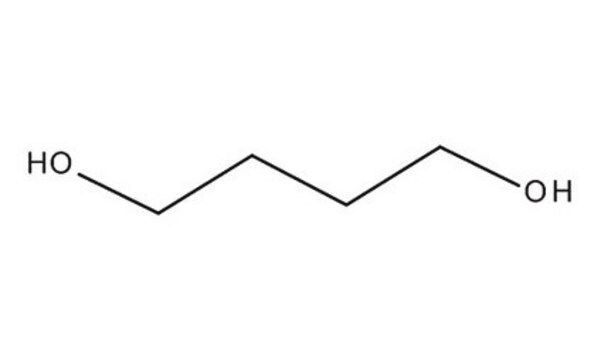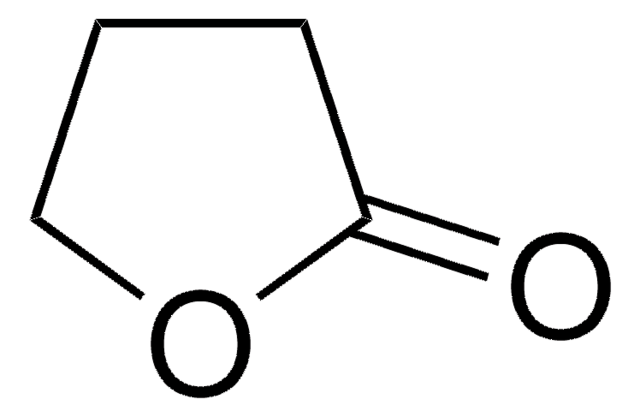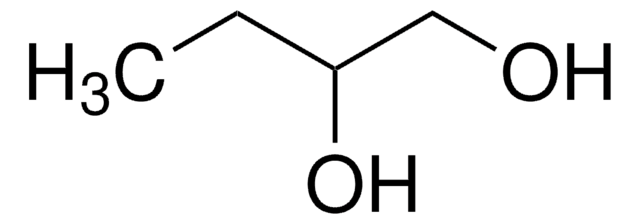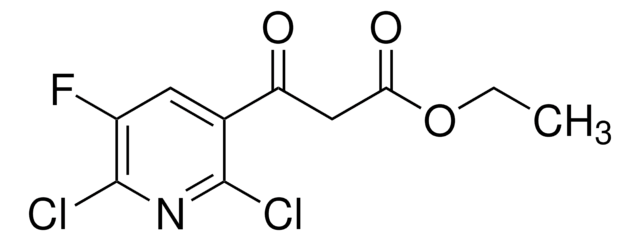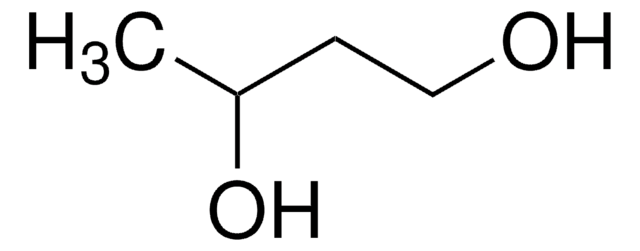493732
1,4-Butanediol
ReagentPlus®, 99%
Sinonimo/i:
1,4-Butylene glycol, Tetramethylene glycol
About This Item
Prodotti consigliati
Grado
reagent
Livello qualitativo
Densità del vapore
3.1 (vs air)
Nome Commerciale
ReagentPlus®
Saggio
99%
Stato
solid or viscous liquid
Temp. autoaccensione
698 °F
dilution
(for general lab use)
Indice di rifrazione
n20/D 1.445 (lit.)
P. ebollizione
230 °C (lit.)
Punto di fusione
16 °C (lit.)
Densità
1.017 g/mL at 25 °C (lit.)
Gruppo funzionale
hydroxyl
Stringa SMILE
OCCCCO
InChI
1S/C4H10O2/c5-3-1-2-4-6/h5-6H,1-4H2
WERYXYBDKMZEQL-UHFFFAOYSA-N
Cerchi prodotti simili? Visita Guida al confronto tra prodotti
Categorie correlate
Applicazioni
- Homoallyl alcohol (3-buten-1-ol) and tetrahydrofuran via vapor-phase dehydration using ZrO2 as a catalyst.
- Poly(1,4-butanediol succinate) polymer by reacting with succinic anhydride.
- Biodegradable homopolyesters [poly(butylene succinate) and poly(butylene adipate)] and copolyesters [poly(butylene succinate-co-butylene adipate)] by treating with succinic acid and adipic acid via esterification and deglycolization reaction.
- Poly(1,4-butyl sebacate) by polyesterification reaction with sebacic acid or its derivatives.
Note legali
Avvertenze
Warning
Indicazioni di pericolo
Consigli di prudenza
Classi di pericolo
Acute Tox. 4 Oral - STOT SE 3
Organi bersaglio
Central nervous system
Codice della classe di stoccaggio
10 - Combustible liquids
Classe di pericolosità dell'acqua (WGK)
WGK 1
Punto d’infiammabilità (°F)
273.2 °F - closed cup
Punto d’infiammabilità (°C)
134 °C - closed cup
Dispositivi di protezione individuale
Eyeshields, Faceshields, Gloves, type ABEK (EN14387) respirator filter
Scegli una delle versioni più recenti:
Possiedi già questo prodotto?
I documenti relativi ai prodotti acquistati recentemente sono disponibili nell’Archivio dei documenti.
I clienti hanno visto anche
Protocolli
99%; Glycerol, ≥99.5%; Tetraethylene glycol, 99%
Il team dei nostri ricercatori vanta grande esperienza in tutte le aree della ricerca quali Life Science, scienza dei materiali, sintesi chimica, cromatografia, discipline analitiche, ecc..
Contatta l'Assistenza Tecnica.
